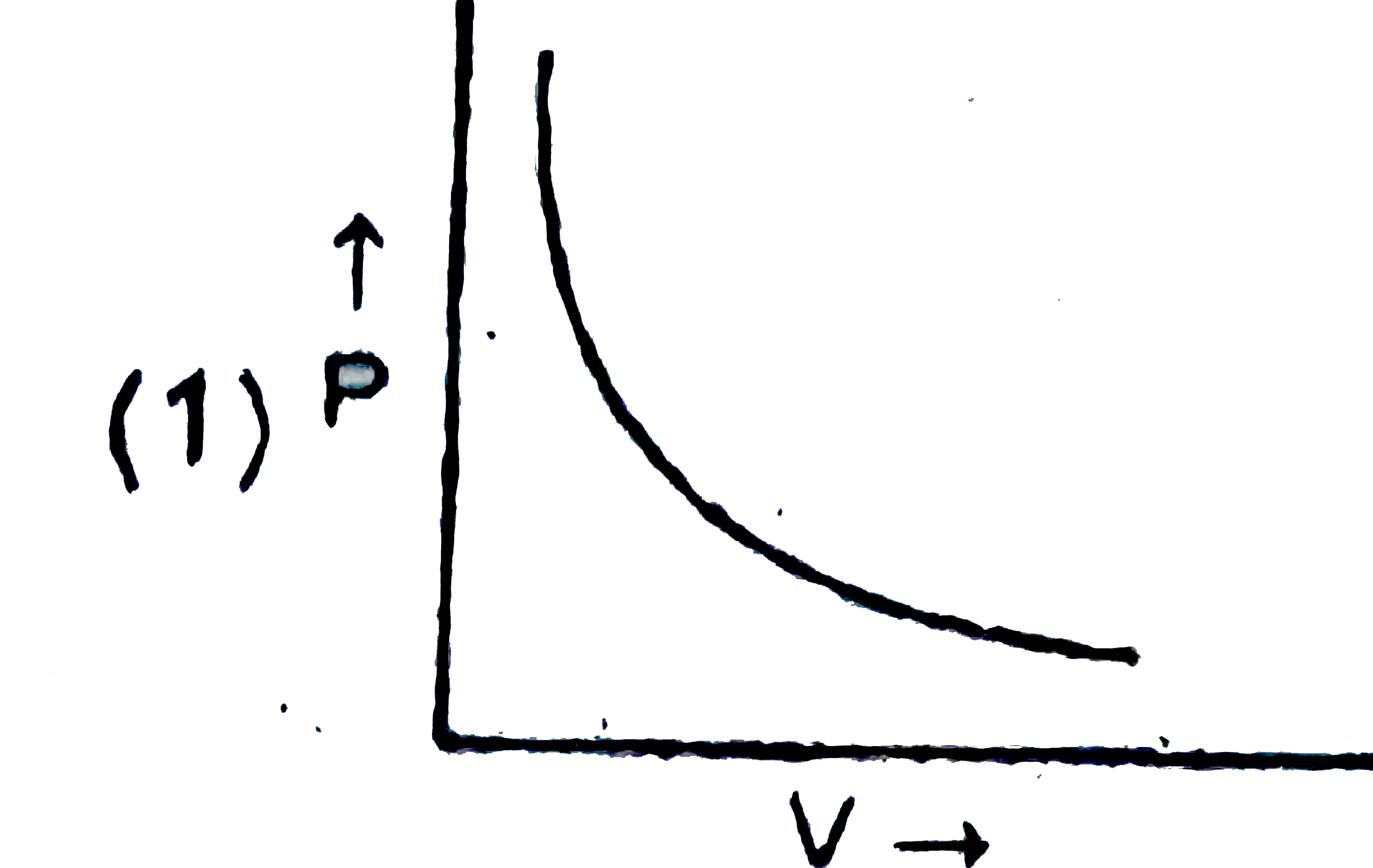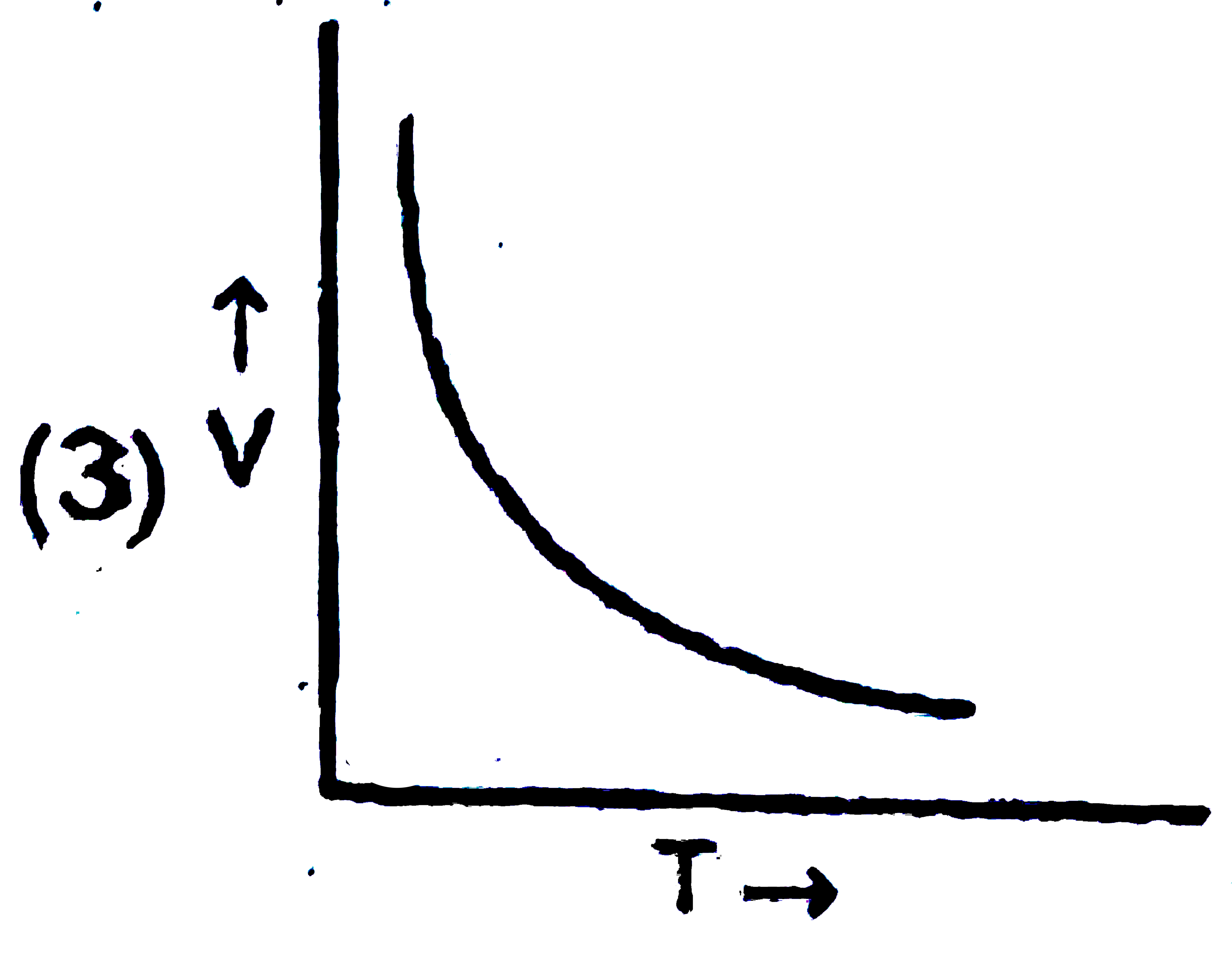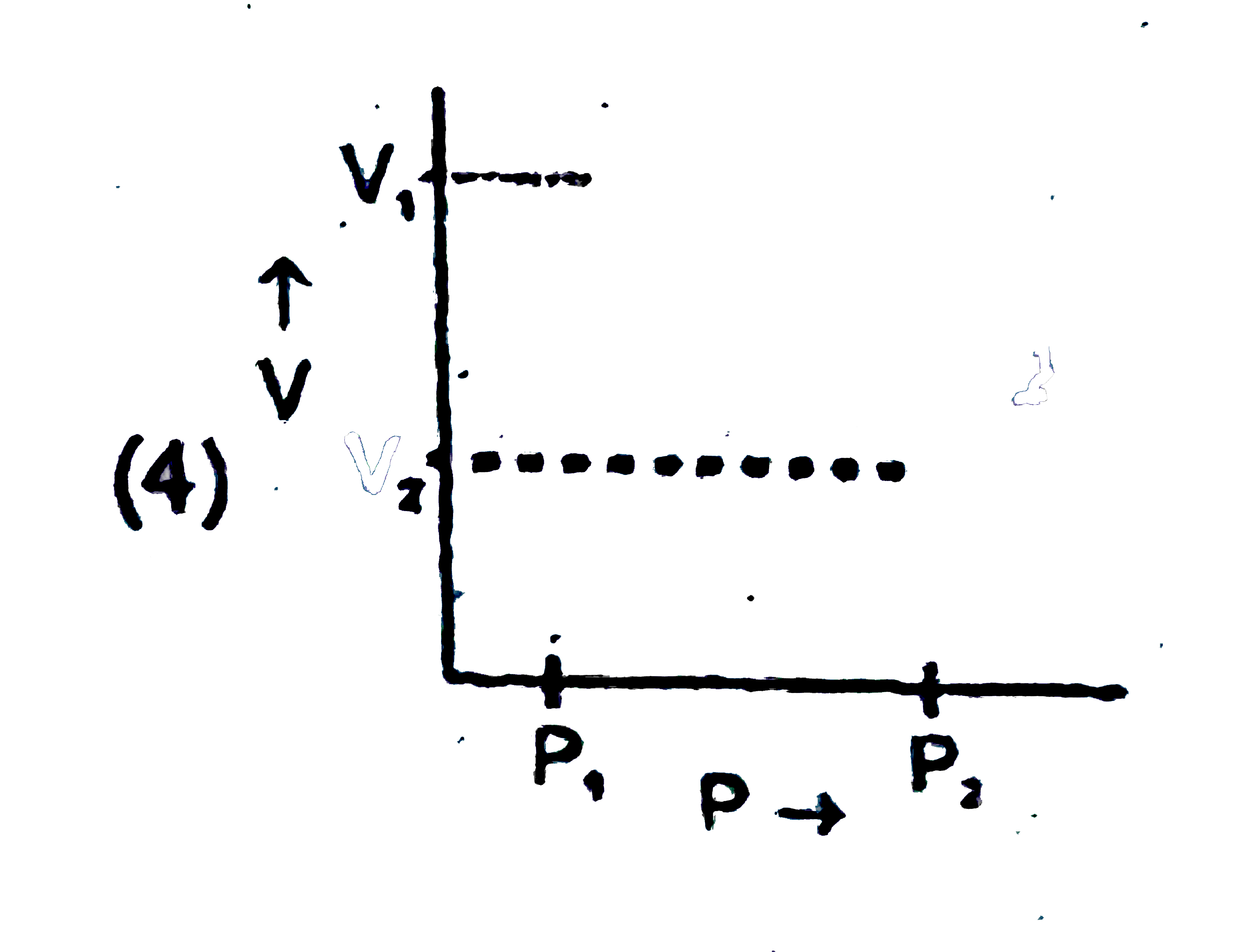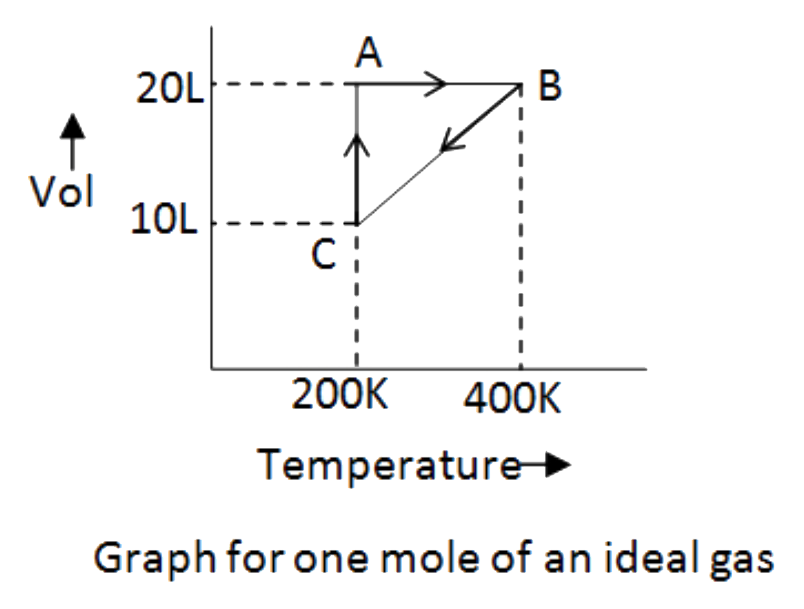It the following processes, identify the irreversible process :




The correct Answer is:4
To identify the irreversible process among the given options, we need to understand the characteristics of reversible and irreversible processes in thermodynamics.
1. Understanding Reversible Processes:
- A reversible process is one where the system remains in equilibrium throughout the process. This means that any change in pressure and volume occurs in a smooth and continuous manner, without any sudden jumps or breaks.
- Graphically, the pressure-volume (P-V) curve for a reversible process is regular and can be either linear or curved, but it does not have any abrupt changes.
2. Understanding Irreversible Processes:
- An irreversible process is characterized by sudden changes in pressure or volume, meaning that the system does not remain in equilibrium during the process.
- In a P-V graph, this would appear as a sudden drop or spike in pressure or volume, indicating that the system has undergone a change that is not gradual.
3. Analyzing the Given Options:
- For each option provided, we need to check the nature of the P-V graph:
- Option 1: Regular change in pressure and volume (Reversible)
- Option 2: Regular change in pressure and volume (Reversible)
- Option 3: Regular change in pressure and volume (Reversible)
- Option 4: Sudden change in pressure or volume (Irreversible)
4. Identifying the Irreversible Process:
- After analyzing the options, we find that Option 4 shows a sudden change in either pressure or volume, indicating that the system is not at equilibrium during this process. Therefore, this option represents an irreversible process.
5. Conclusion:
- The irreversible process among the given options is Option 4.
- A reversible process is one where the system remains in equilibrium throughout the process. This means that any change in pressure and volume occurs in a smooth and continuous manner, without any sudden jumps or breaks.
- Graphically, the pressure-volume (P-V) curve for a reversible process is regular and can be either linear or curved, but it does not have any abrupt changes.
- An irreversible process is characterized by sudden changes in pressure or volume, meaning that the system does not remain in equilibrium during the process.
- In a P-V graph, this would appear as a sudden drop or spike in pressure or volume, indicating that the system has undergone a change that is not gradual.
- For each option provided, we need to check the nature of the P-V graph:
- Option 1: Regular change in pressure and volume (Reversible)
- Option 2: Regular change in pressure and volume (Reversible)
- Option 3: Regular change in pressure and volume (Reversible)
- Option 4: Sudden change in pressure or volume (Irreversible)
- After analyzing the options, we find that Option 4 shows a sudden change in either pressure or volume, indicating that the system is not at equilibrium during this process. Therefore, this option represents an irreversible process.
- The irreversible process among the given options is Option 4.
Topper's Solved these Questions
- BOOK - RESONANCE ENGLISHCHAPTER - THERMODYNAMIC & THERMOCHEMISTRYEXERCISE - INORGANIC CHEMISTRY(P-Block Elements)26videos
THERMODYNAMIC & THERMOCHEMISTRY
- BOOK - RESONANCE ENGLISHCHAPTER - STRUCTURAL IDENTIFICATION & PRACTICAL ORGANIC CHEMISTRYEXERCISE - Section -B18videos
STRUCTURAL IDENTIFICATION & PRACTICAL ORGANIC CHEMISTRY
Similar Questions
Which is an irreversible process ?
View SolutionWhich of the following processes involve the roasting process ?
View SolutionFind work done in the irreversible process C→A.
 View Solution
View SolutionMatch the following processes with entropy change
 View Solution
View SolutionWhich of the following processes is an isoentropic process?
View SolutionWhich of the following processes is reversible?
View SolutionWhich of the following expression for entropy change of an irreversible process ?
View SolutionFor an irreversible process, ΔS>0.
View SolutionWhich of the following processes evolve CO?
View SolutionAmong the following processes, select the process for which ΔS is positive.
View Solution

